Medieval Pork Liver Pâté

Get ready to transport your taste buds straight back to medieval times with this absolutely divine pork liver pâté that’s about to become your secret weapon for impressive entertaining.

This isn’t just any ordinary pâté – it’s a rich, silky masterpiece that combines the earthy depth of fresh pork liver with succulent belly pork, creating layers of flavor that’ll have your guests practically licking their plates clean.

The magic happens when that half clove of garlic mingles with a splash of dry white wine or brandy, transforming simple ingredients into something that tastes like it came straight from a French countryside kitchen.
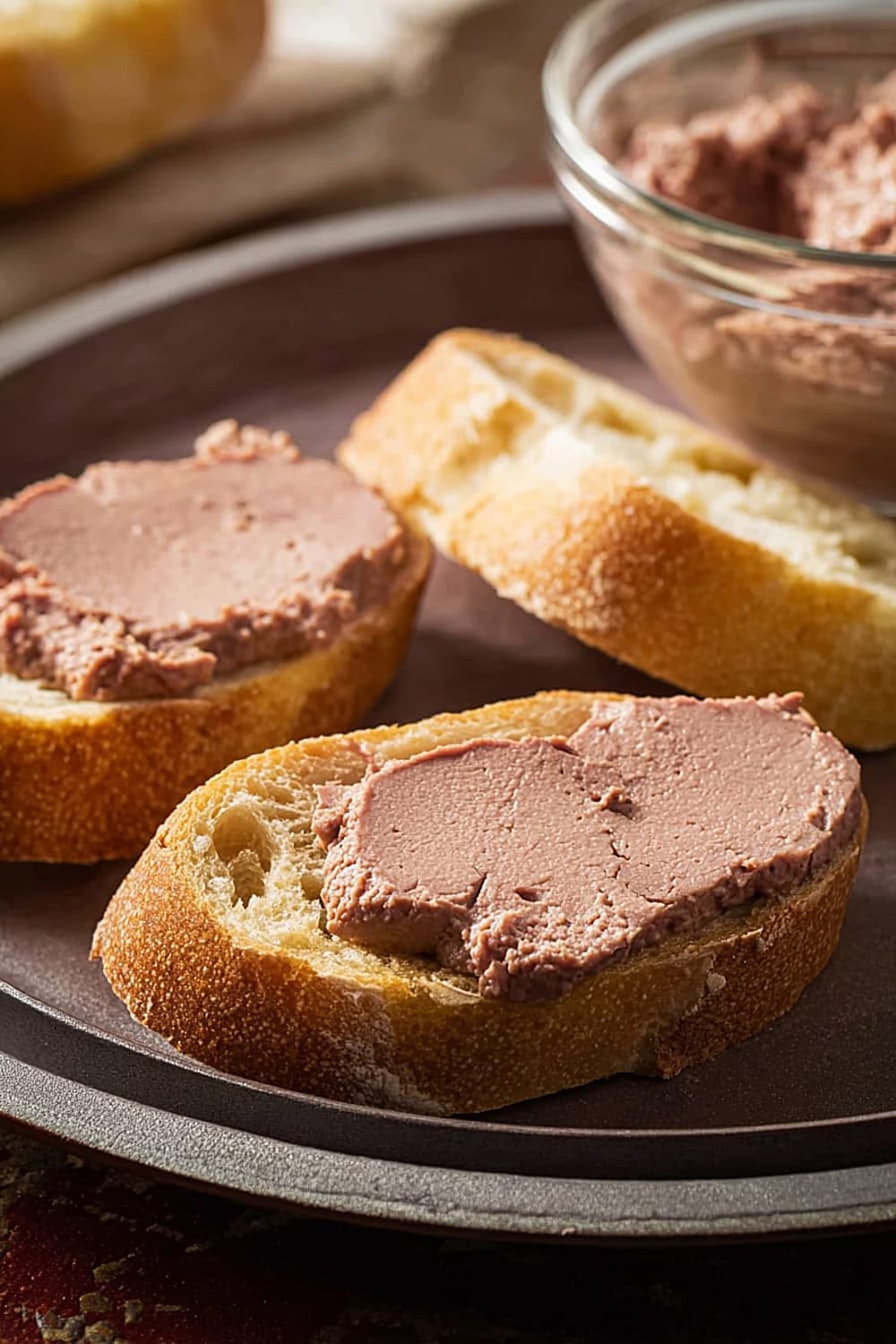
What makes this recipe absolutely brilliant is how those crispy bacon strips on top create the perfect textural contrast against the smooth, creamy pâté underneath – it’s like getting a little surprise in every single bite.

Fair warning: once you master this technique of slow-baking in a bain-marie, you’ll be the person everyone begs to bring appetizers to every gathering, and honestly, you’ll love showing off this impressive skill.
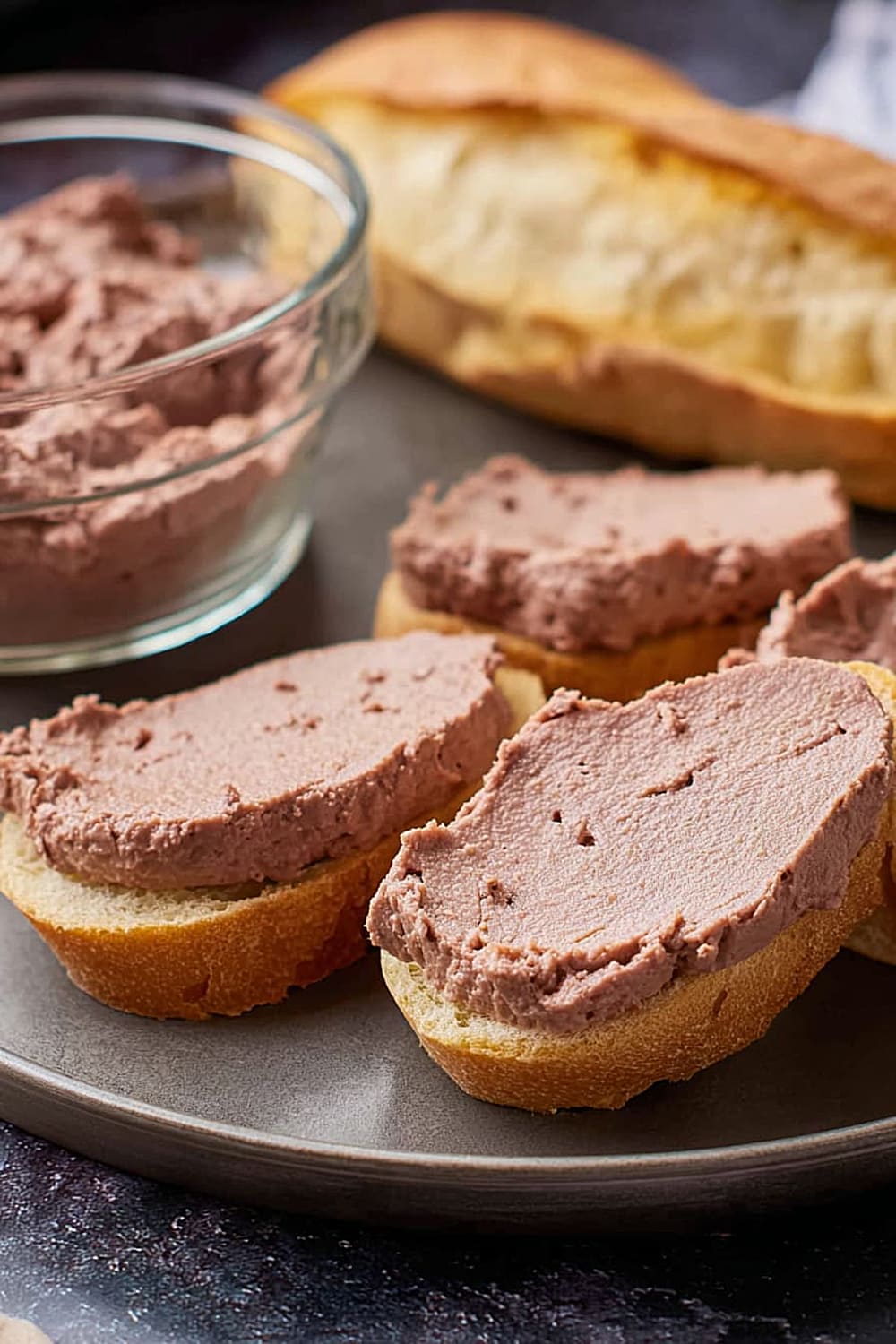
The best part is that this gorgeous pâté actually gets better as it sits, so you can make it well ahead of time and watch it develop those complex, mouthwatering flavors that’ll make people think you’re some kind of culinary genius.
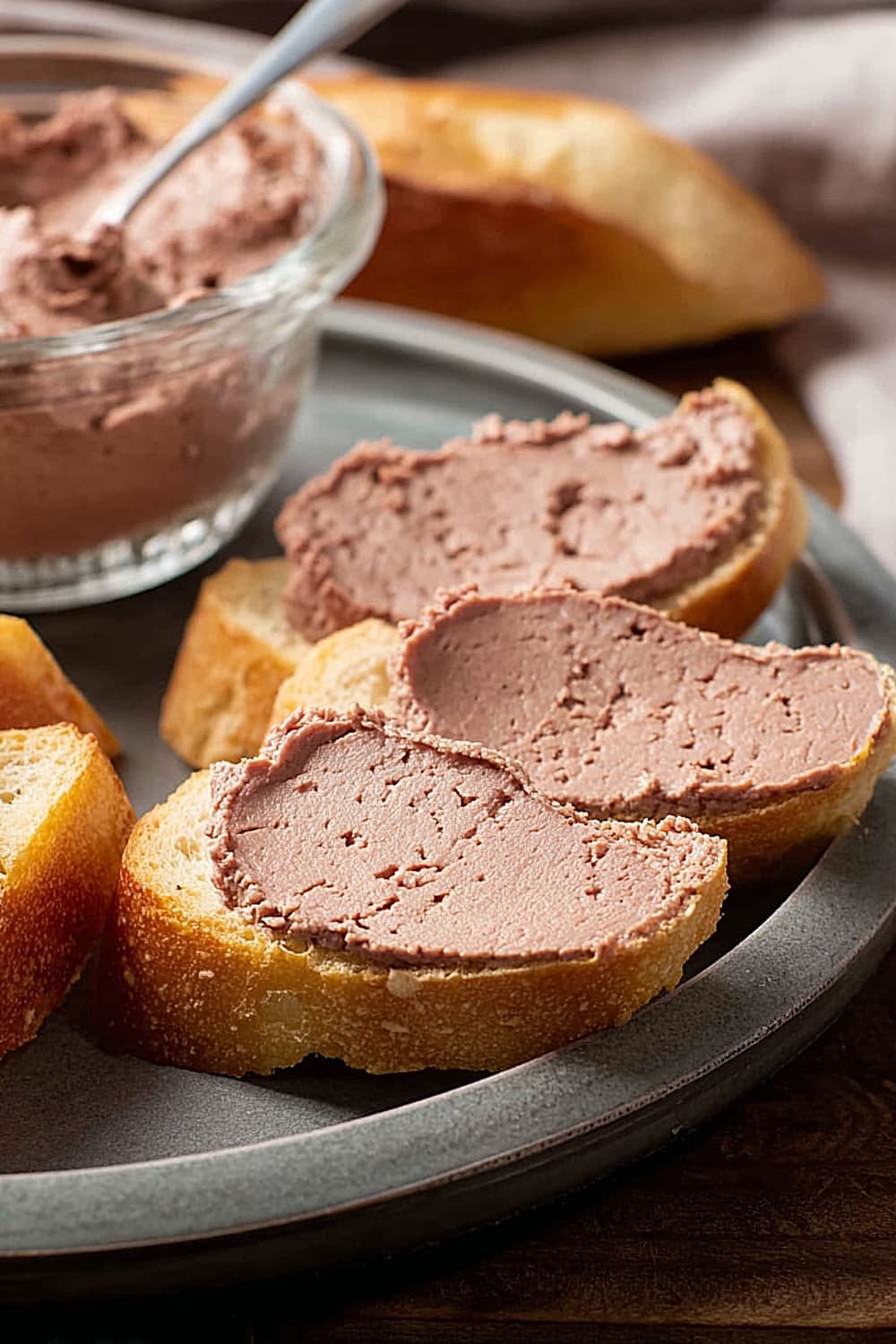
Ingredients
For the Pâté Base
- 8 oz (225g) fresh pigs liver, cleaned and trimmed
- 8 oz (225g) fresh belly pork, boned and cubed
- ½ clove garlic, for aromatic depth
- 2 tablespoons dry white wine or brandy
- 2 level teaspoons salt
- 1 level teaspoon ground black pepper
For the Topping
- 3 rashers streaky bacon, for the decorative lattice top

Instructions
Prepare the Meat Mixture
- 1 Using a food processor or sharp knife, mince the 8 oz pork liver and 8 oz fresh belly pork coarsely – you want texture, not a completely smooth paste, so pulse the food processor in short bursts rather than running it continuously.
- 2 Mince or crush the ½ clove of garlic very finely using a microplane grater or garlic press, ensuring no large chunks remain that could create bitter pockets in your finished pâté.
- 3 Add the minced garlic to the meat mixture and combine thoroughly, making sure the garlic is evenly distributed throughout for consistent flavor in every bite.
- 4 Pour in the 2 tablespoons of dry white wine or brandy, which will add complexity and help tenderize the meat during the long, slow cooking process.
- 5 Season with 2 level teaspoons salt and 1 level teaspoon ground black pepper, mixing everything together until the seasonings are completely incorporated and the mixture holds together when pressed.
Assemble the Pâté
- 6 Press the seasoned meat mixture firmly into a pint-size oven-proof dish or traditional terrine mold, eliminating any air pockets by pressing down with the back of a spoon or your clean hands.
- 7 Using the flat side of a knife blade, stretch each of the 3 rashers of streaky bacon into thin strips, then arrange them in an attractive crisscross lattice pattern over the top of the meat mixture.
- 8 Cover the dish tightly with its lid or aluminum foil if no lid is available – this will prevent the top from drying out during the long baking process.
Rest and Bake
- 9 Allow the assembled pâté to rest at room temperature for 2-3 hours before baking, giving the flavors time to meld and penetrate the meat for maximum taste development.
- 10 Preheat your oven to 300°F (150°C/Gas Mark 2) and place the covered pâté dish inside a larger baking tray, then carefully pour hot water into the tray until it reaches halfway up the sides of the pâté dish, creating a gentle bain-marie.
- 11 Bake in the center of the preheated oven for approximately 1½ hours, maintaining the water level in the bain-marie throughout cooking to ensure even, gentle heat distribution.
- 12 Remove the lid or foil for the final 10 minutes of baking time, allowing the bacon lattice to crisp and develop a beautiful golden-brown color that adds both visual appeal and textural contrast.

Recommended Equipment and Kitchen Tools
Essential Tools (for best results):
- Food processor – Makes quick work of mincing the liver and pork to the perfect coarse texture, though a sharp knife and cutting board work too
- Pint-size terrine dish or oven-proof dish – Traditional ceramic or enameled cast iron works beautifully for even heat distribution
- Large roasting pan – Essential for creating the bain-marie water bath that ensures gentle, even cooking
- Instant-read thermometer – Helps ensure your pâté reaches the safe internal temperature of 160°F (71°C)
Helpful Upgrades:
- Kitchen scale – Professional chefs swear by weighing ingredients for consistent results, especially with the 8 oz portions of meat
- Microplane grater – Creates perfectly minced garlic without the harsh bite of larger pieces
- Silicone spatula – Perfect for scraping every bit of mixture from your food processor bowl
- Aluminum foil – Heavy-duty foil creates a better seal if your dish doesn’t have a fitted lid
Nice-to-Have Options:
- Traditional terrine mold with lid – Creates the classic rectangular shape and professional presentation
- Parchment paper – Line your dish for easier removal and elegant presentation when serving
- Digital probe thermometer – Takes the guesswork out of doneness testing
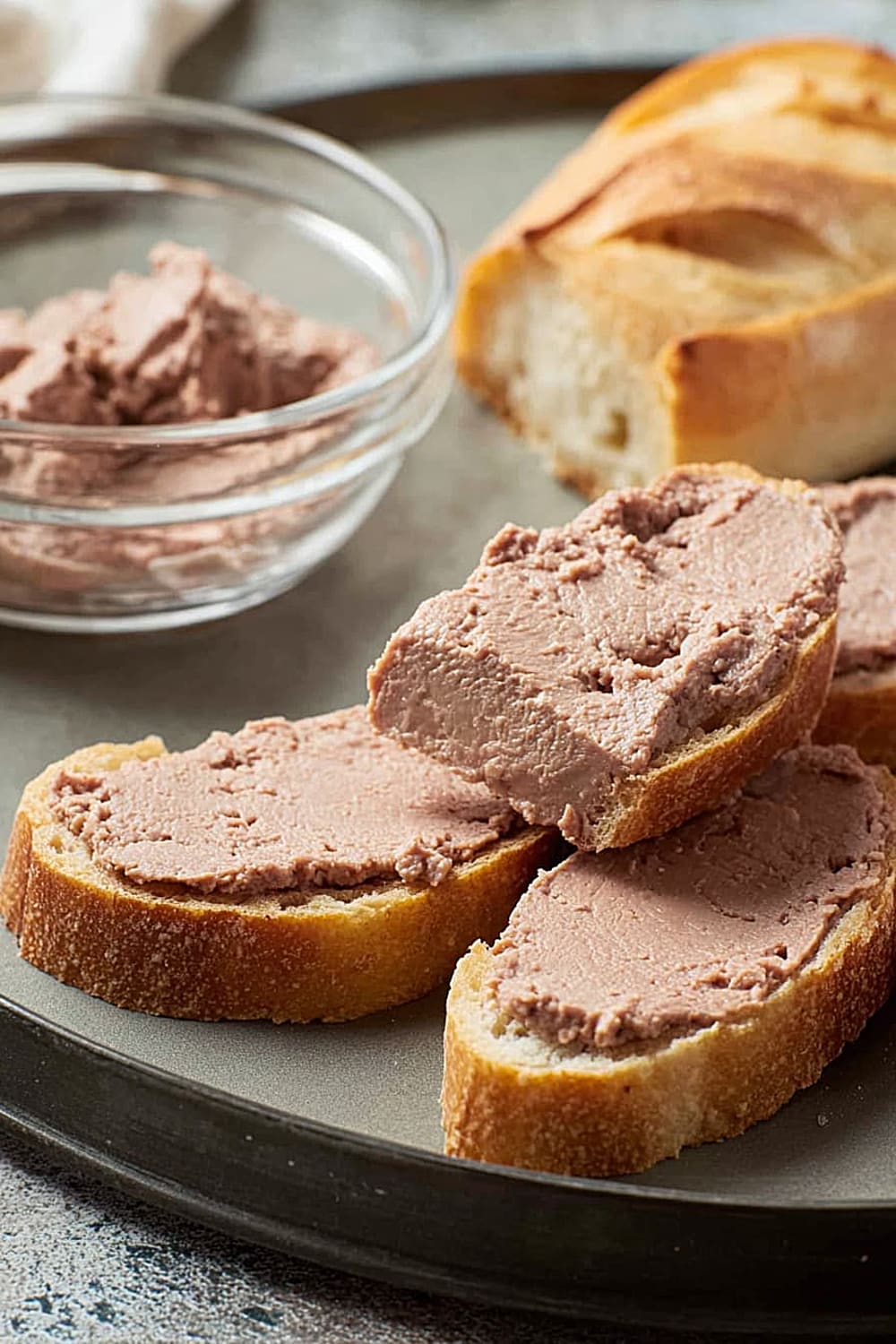
Recipe Variations and Dietary Modifications
Flavor Enhancement Options:
- Herb-infused version – Add 1 teaspoon fresh thyme or ½ teaspoon dried herbs de Provence to the meat mixture for aromatic complexity
- Cognac upgrade – Replace wine with 2 tablespoons good cognac for a more luxurious, sophisticated flavor profile
- Mushroom addition – Fold in 2 oz finely chopped sautéed mushrooms for earthy depth and additional texture
- Pistachio studded – Mix in ¼ cup chopped pistachios for color contrast and delightful crunch
Texture Variations:
- Smoother consistency – Process the meat mixture longer for a more refined, restaurant-style smooth pâté
- Coarser country style – Hand-chop the meats for a more rustic, traditional farmhouse texture
- Layered presentation – Create alternating layers of smooth and coarse mixtures for visual interest
Preparation Modifications:
- Make-ahead friendly – This pâté actually improves after 24-48 hours in the refrigerator as flavors develop
- Individual portions – Divide mixture among 4-6 small ramekins for elegant individual servings, reducing baking time to 45-60 minutes
- Bacon-wrapped logs – Form mixture into logs and wrap completely in bacon for a different presentation style
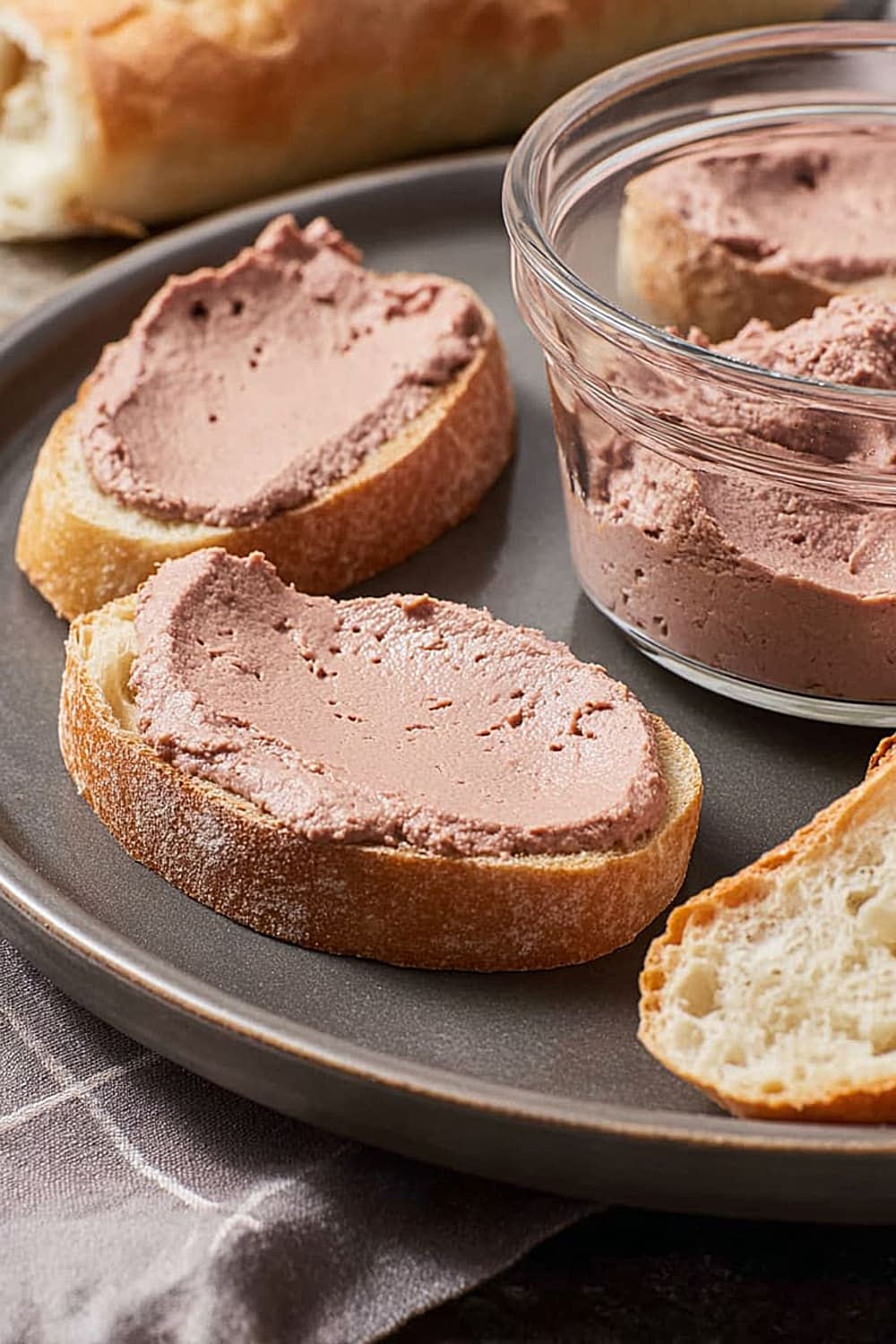
Nutritional Information and Health Benefits
Key Nutritional Highlights:
This traditional pâté provides approximately 180-220 calories per 2-ounce serving, with the majority coming from high-quality animal proteins. The combination of pork liver and belly pork delivers a substantial 12-15 grams of protein per serving, making it an excellent appetizer that actually contributes meaningful nutrition to your meal. The fat content, primarily from the belly pork and bacon, provides satiation and helps with the absorption of fat-soluble vitamins.
Health Benefits of Main Ingredients:
Pork liver stands out as one of nature’s most nutrient-dense foods, packed with vitamin A, iron, and B-vitamins, particularly B12 which supports nervous system function and energy metabolism. The iron content in liver is highly bioavailable, making this pâté an excellent choice for those looking to boost iron levels naturally. Fresh belly pork provides essential amino acids and healthy fats, while the small amount of garlic contributes allicin compounds known for their anti-inflammatory and immune-supporting properties. The wine or brandy not only adds flavor but also contains antioxidants that may support heart health.
Dietary Considerations:
This pâté is naturally gluten-free and low-carb, containing less than 2 grams of carbohydrates per serving. It’s rich in vitamin B12, folate, and zinc, making it particularly beneficial for those following low-carb or ketogenic eating patterns. However, it’s high in cholesterol and sodium, so those monitoring these nutrients should enjoy it in moderation as part of a balanced diet.

Smart Swaps and Ingredient Substitutions
Common Substitutions:
- Pork liver → Chicken liver (use same amount, reduce cooking time by 15-20 minutes for more delicate texture)
- Fresh belly pork → Ground pork shoulder mixed with 2 tablespoons heavy cream for similar richness
- Dry white wine → Dry sherry or white wine vinegar (1 tablespoon only if using vinegar)
- Streaky bacon → Pancetta slices or prosciutto for different flavor profiles
Budget-Friendly Swaps:
- Brandy → Cooking sherry or additional white wine with ½ teaspoon vanilla extract
- Fresh belly pork → Ground pork mixed with 1 tablespoon olive oil for added richness
- Individual terrine dish → Small loaf pan lined with parchment paper for easy removal
Pantry Emergency Substitutions:
- Fresh garlic → ¼ teaspoon garlic powder (mix with wine first to rehydrate)
- White wine → Chicken broth with 1 teaspoon lemon juice for acidity
- Streaky bacon → Thin ham slices or omit topping entirely for simpler presentation
Pro Tips for Substitutions:
- When using chicken liver, soak in milk for 30 minutes first to remove any bitter flavors
- Ground meat substitutions may need an extra 10-15 minutes baking time to ensure proper cooking
- Always taste and adjust seasoning after making substitutions, as different meats may require more salt or pepper

Make It Diabetes-Friendly
Carb Content Analysis:
- Original recipe: Less than 2g carbs per serving – already excellent for blood sugar management
- Wine reduction: Use only 1 tablespoon wine instead of 2 tablespoons to reduce carbs by approximately 0.5g per serving
- Herb enhancement: Add fresh herbs instead of any sweet glazes to maintain the low-carb profile
Portion & Timing Tips:
- Ideal serving size: 2-3 oz portions provide 12-18g protein with minimal carb impact
- Blood sugar friendly: The high protein and fat content helps slow digestion and prevent spikes
- Meal timing: Serve as an appetizer 30 minutes before main course to help moderate overall meal absorption
- Pairing strategy: Combine with raw vegetables or cheese for additional protein and healthy fats
Smart Serving Suggestions:
- Cucumber rounds or bell pepper slices instead of crackers saves 15-20g carbs per serving
- Celery sticks provide crunch with virtually zero carbs
- Cherry tomatoes add freshness with only 1g carbs per tomato
Total Carb Reduction: Using these modifications keeps each serving under 1.5g net carbs while maintaining all the rich, satisfying flavors that make this pâté special.
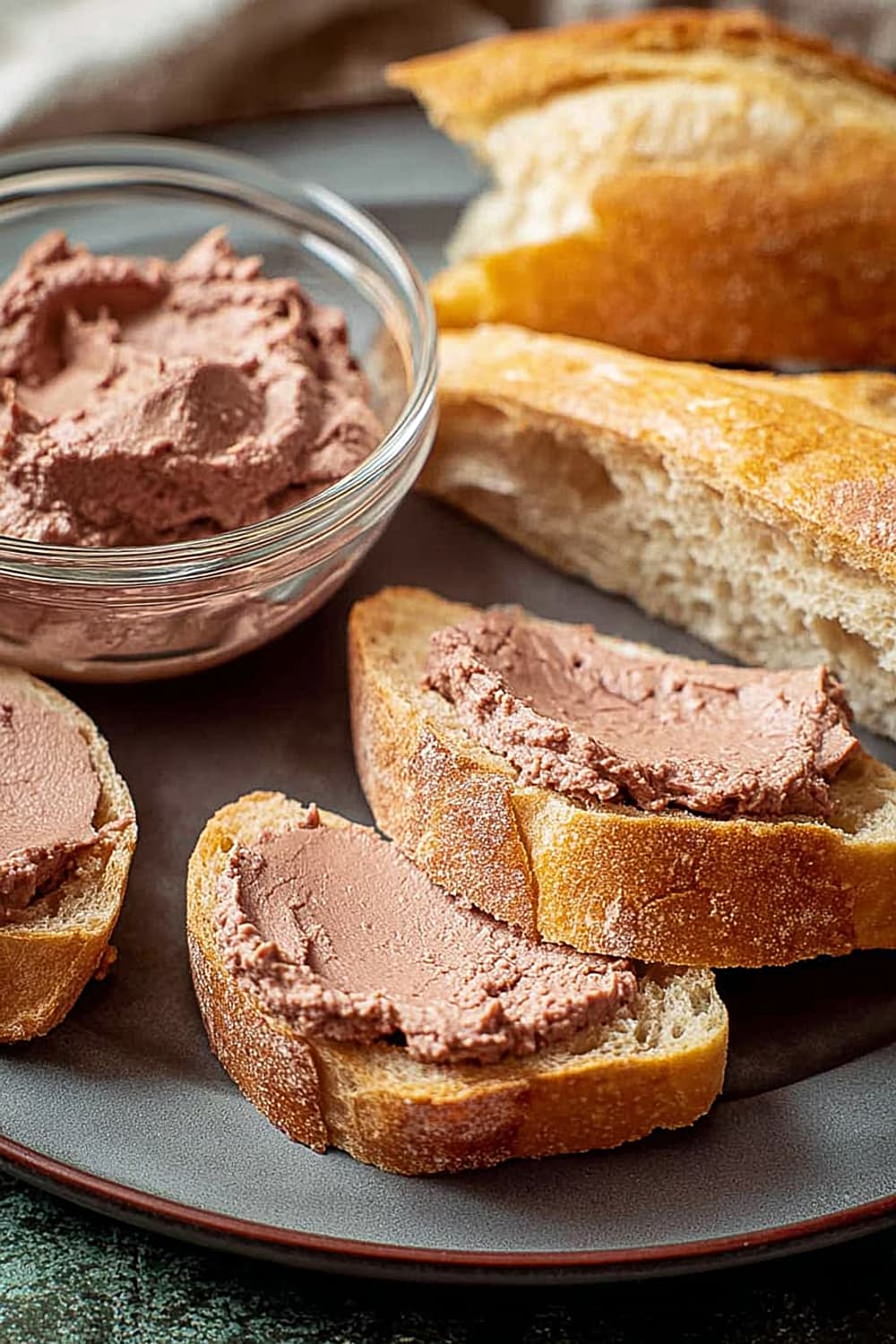
Perfect Pairing Suggestions
Beverage Pairings:
A crisp Sancerre or Chablis beautifully complements the rich liver flavors without overwhelming the delicate wine notes in the pâté itself. For red wine lovers, try a light Pinot Noir from Burgundy that won’t compete with the subtle seasonings. Champagne or Prosecco creates an elegant contrast, with the bubbles cleansing the palate between rich bites. Non-alcoholic options include sparkling apple cider or grape juice mixed with sparkling water for similar palate-cleansing effects.
Side Dish Recommendations:
Cornichons and capers provide the classic acidic bite that cuts through the pâté’s richness, while crusty French bread or water crackers offer the perfect neutral base. Fresh pear slices add sweetness that plays beautifully against the savory liver, and toasted walnuts contribute textural contrast. A simple mixed green salad with Dijon vinaigrette rounds out the flavors and adds freshness to balance the meal.
Complete Meal Ideas:
Start with this pâté alongside aged cheeses and fresh fruit for an impressive charcuterie board. Follow with roasted chicken or beef tenderloin for special occasions, or keep it simple with herb-roasted vegetables for casual entertaining. Chocolate mousse or fresh berries with cream make perfect endings that don’t compete with the savory richness.
Occasion Suggestions:
This pâté shines at holiday gatherings, wine tastings, and intimate dinner parties where you want to impress without spending hours in the kitchen day-of. It’s perfect for fall and winter entertaining when rich, warming flavors are most appealing.

Pro Tips and Troubleshooting
Professional Techniques:
The key to silky-smooth pâté lies in maintaining consistent low heat – never let your oven temperature climb above 300°F or you’ll risk a grainy texture. Strain your wine before adding it to remove any sediment that could create an unpleasant mouthfeel. When pressing the mixture into your dish, tap firmly on the counter to eliminate air bubbles that can create uneven cooking.
Common Mistake Prevention:
Never skip the resting period – those 2-3 hours allow the salt to properly season the meat and the flavors to meld completely. Check your bain-marie water level halfway through cooking and add hot water if needed to maintain gentle, even heat. Don’t overbake – the pâté is done when it feels firm to the touch and has pulled slightly from the sides of the dish.
Storage and Make-Ahead Strategies:
This pâté actually improves after 24-48 hours in the refrigerator, making it perfect for stress-free entertaining. Wrap tightly in plastic wrap and refrigerate for up to 5 days, or freeze for up to 3 months. Bring to room temperature 30 minutes before serving for the best flavor and texture.
Scaling and Presentation:
Double the recipe easily using a larger terrine dish and extending baking time by 20-30 minutes. For elegant presentation, run a knife around edges while still warm for clean removal, and garnish with fresh herbs or additional cornichons when serving.
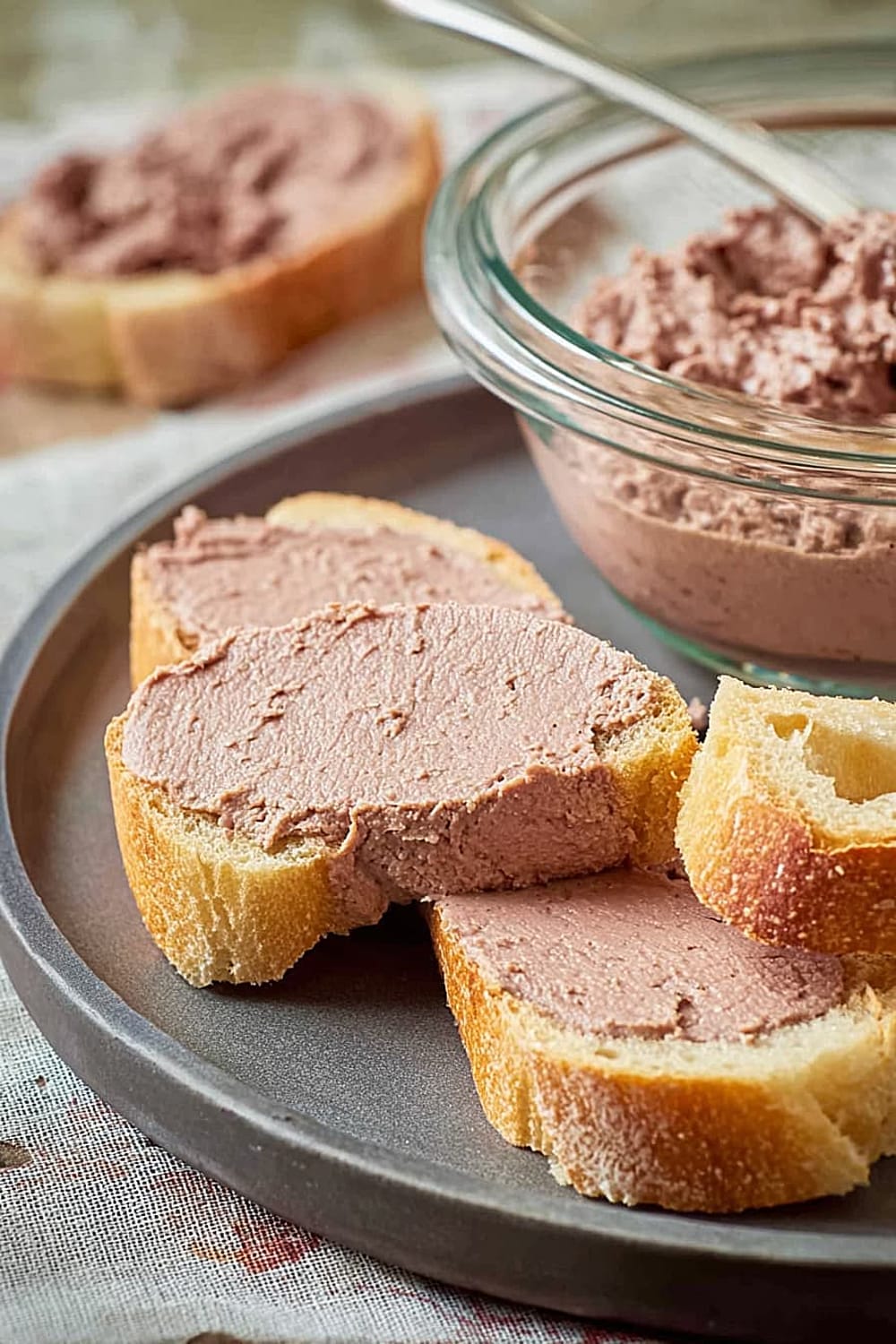
This medieval-inspired pâté proves that sometimes the most impressive dishes come from the simplest techniques – slow cooking, quality ingredients, and a little patience create something truly extraordinary that’ll have your guests talking long after the last bite disappears.